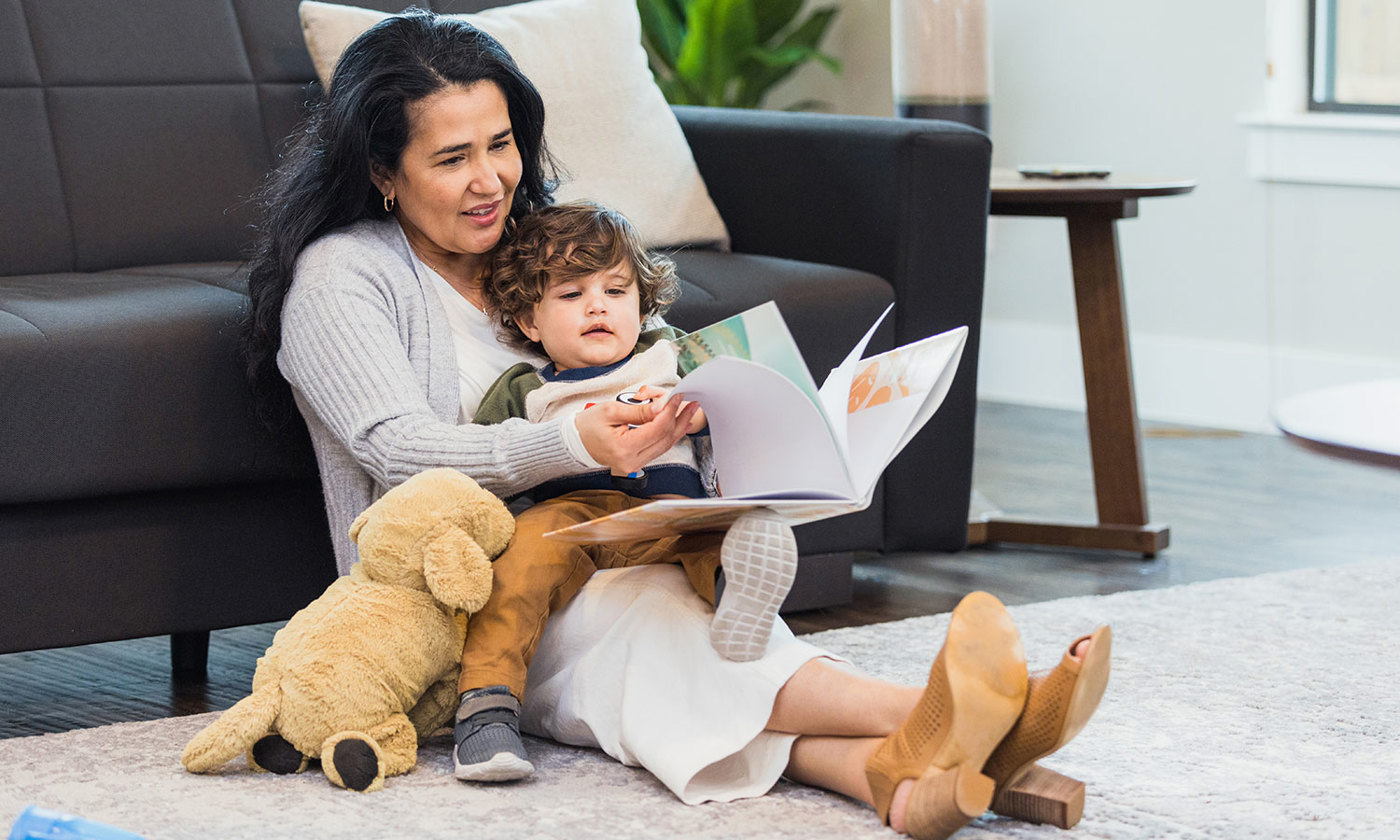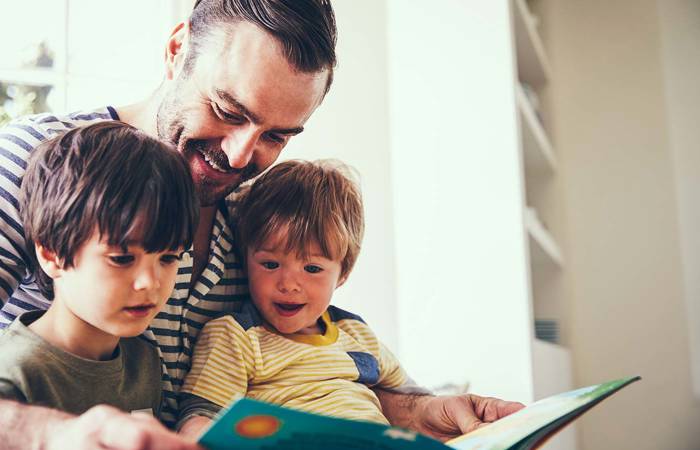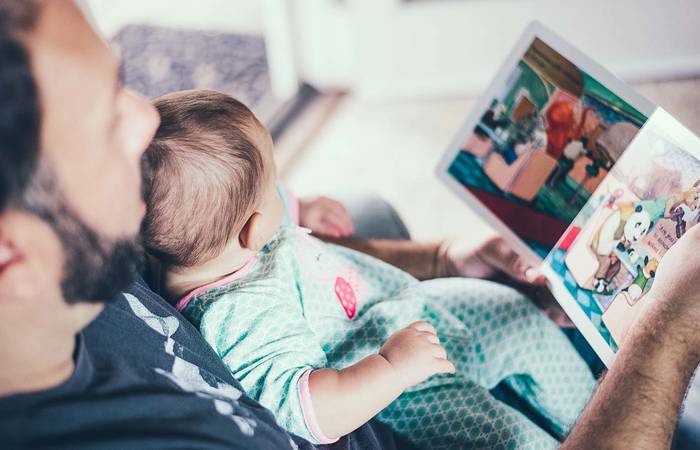Like what you see?
Sign up to receive more free parenting advice.
Thank you for subscribing to our newsletter!
Early Learning

Credit: iStock.com/SDI Productions
It’s no secret that children love “going on a bear hunt”, discovering “the monster at the end of this book” or being tucked into bed and told they are loved “right up to the moon—and back”. Parents already know the fun and the joy that stories bring.
Regular reading however brings multiple benefits. In the report, Australian’s children: in brief, the Australian Institute of Health and Welfare (AIHW) found that if books are available to children in the home environment and their parents regularly read aloud to them, they were more likely to have successful educational outcomes during their school years.
When to start reading to your child
“Read to your child as soon as possible, even new babies,” recommends Honorary Associate Professor Jane Torr, School of Education at Macquarie University.
“I am looking at studies that show a long-term association between the age when babies are read to (at least within their first year of life), and their future literacy skills, reading motivation and knowledge of vocabulary that carries with them into the primary school years.
“Reading is an important and beneficial experience to have with little babies and toddlers, and they respond with interest and enjoyment and that is the main thing, that they see reading as a happy and enjoyable experience.”
In 2015, researchers found that children whose parents read to them every day at two to three years old had on average higher Year 3 reading ability, than children whose parents read to them less frequently.
Not only did it improve their reading ability, reading to children early on was associated with positive attitudes towards reading when the children were ten years old.
What do babies and toddlers get out of being read to?
Dr Torr explains that one of the most important things young children learn from being read to is the positive enjoyment and entertainment books can provide.
“They also learn that the pictures in picture books represent objects and actions in the real world,” she adds.
Dr Torr explains that picture books support children in learning new words and the meaning of those words by using the pictures to support their understanding.
“Some research has shown that the words in picture books are rarer, and some are more sophisticated than what children are going to hear in everyday conversations, so they are exposed to more unusual words and their meanings at the same time,” she says.
They also learn how to handle books, from learning how to start at the front cover, to turning the pages to how to follow the words.
“Even more important than just reading the print is the parent-child discussion that can happen around the story,” she highlights.
“That discussion scaffolds the child’s learning.”
Read to your child as soon as possible, even new babies.Honorary Associate Professor Jane Torr
Stay up to date with the latest news and articles from First Five Years
Thank you for subscribing to our newsletter!
How to engage your child in reading
Dr Torr’s number one recommendation to engage children in reading is for parents to enjoy the process.
“Practice good storytelling techniques by using your voice, facial expression and gestures to make the book come alive, or pause to create that sense of suspense,” she recommends.
“Be conscious of the child’s reactions so you can pace yourself and don’t feel like you have to finish the book if they’ve lost interest.”
She also recommends getting children physically involved where possible.
“If the character in the book is touching their toes, for example, ask your child if they can touch their toes,” she adds.
Making the book relate to their world is another key engagement strategy.
“Connect the story to the child’s life, for example, on a page with an image of a bike, you could say, ‘You have a bike like this one’,” she explains.
“It helps to make the story relevant to their own life.”
Finally, she recommends following the child’s lead on discussions around the book.
But what if a child doesn’t show any interest in reading?
While Dr Torr notes that different strategies will work for different children, her key points are for parents to show they value books and to give the child autonomy in choosing books.
“My first suggestion would be to increase the value of books by giving them as gifts for special occasions,” she says.
"Also, give the child some autonomy and allow them to choose their own books when they go to the library, or choose a book to buy from a bookstore as a treat.
“Look at different topics and different reading materials and try to connect that reading material to your child’s current interests whether that’s a particular toy or sport.”
Dr Torr explains that learning to read in primary school takes a lot of resilience and patience so developing a love for reading supports their learning later on.
Why read? It’s not just about learning letters
Some parents wonder if there is any benefit in teaching their young child to identify letters and read before they start primary school.
“Decoding is where the child learns that a letter represents a sound in speech,” says Dr Torr.
“Many children notice print and letters as they go about their everyday games and activities.
“They learn informally about letters and speech sounds by singing songs, nursery rhymes, playing games and clapping out rhymes.
“Parents can encourage this learning by playing games and drawing attention to words and letters.”
What parents don’t realise is by simply reading to a child and sharing experiences with them, they are in fact giving them, what some argue is, the most critical learning-to-read skill.
“There are two main processes in learning to read, and you need both,” explains Dr Torr.
“First is being able to decode the letters. The second is being able to understand what the words mean.
“It is not enough to simply recognise and read a word, you must understand the meaning of the word and the sentence in its context.
“You need a lot of background knowledge to be able to do that.
“That background knowledge is what children learn in the early years through being read to, looking at books, going for walks, having conversations and having lots of different experiences.
“Books can even provide experiences children might not have access to, or knowledge that is beyond their immediate life, like reading about dinosaurs.
“That background knowledge is associated with success in learning to read when they reach school, which is why reading early on is so important.”
Dr Torr’s tips for choosing books for under 3s.
- Select picture books that show familiar things that young children can relate to in their life, such as pets, babies, children, toys, etc.
- Books where the picture is on a plain background helps young children focus better.
- Rhyming patterns support young children in remembering the story and chiming in.
- Books with themes that are important at your child’s age and experiences helps them connect to the story, for example, the birth of a sibling, or sharing with friends.
- Most importantly, choose books you as a parent enjoy as children will pick up on that enjoyment and pleasure you experience while reading it to them.







